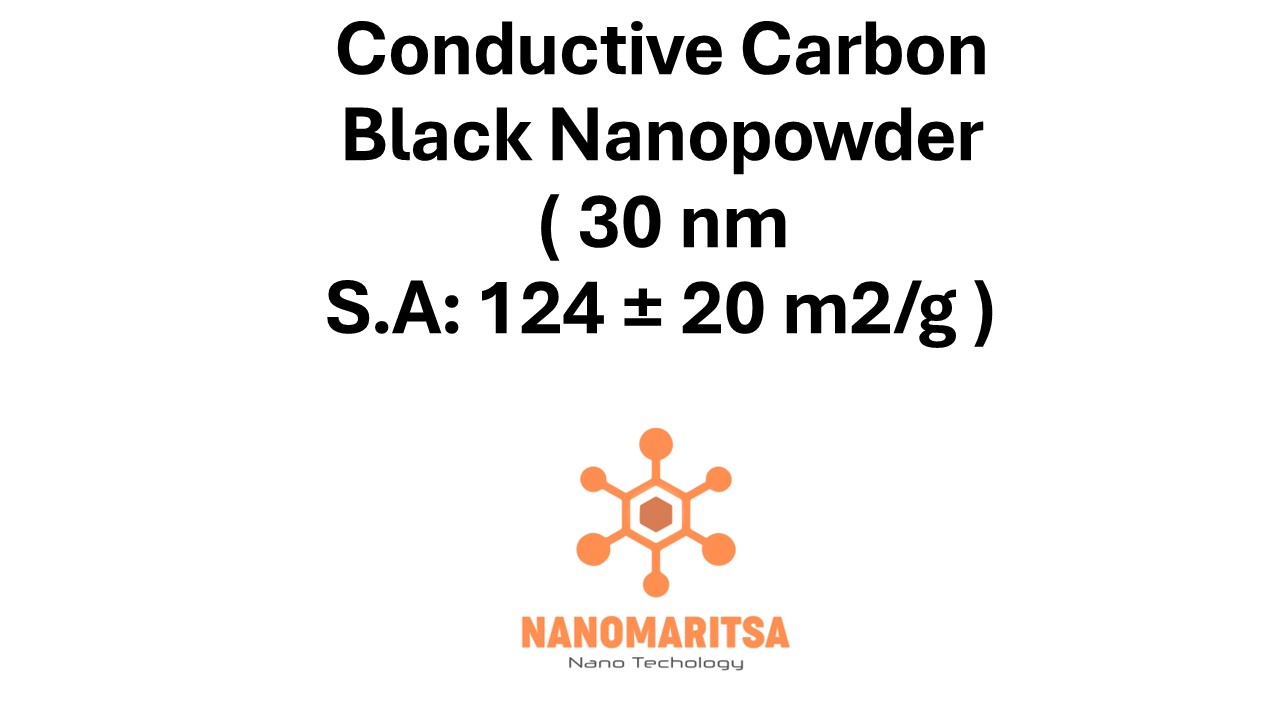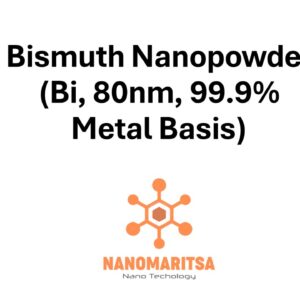Conductive Carbon Black Nanopowder (30 nm, S.A: 124 ± 20 m²/g) is a high-performance material designed to enhance electrical conductivity, thermal stability, and durability across a wide range of industrial applications. With a nanoscale particle size of 30 nm and a specific surface area of 124 ± 20 m²/g, this carbon black nanopowder is ideal for use in batteries, conductive polymers, coatings, and advanced composites. Its balance of surface area and particle size ensures optimal performance and efficient processing in diverse systems.
1. Key Properties
Electrical Conductivity: The nanoscale structure and surface characteristics of carbon black enable excellent electron transport, enhancing conductivity in target applications.
Nanoscale Size: The 30 nm particle size allows for efficient dispersion and integration into composite materials, improving uniformity and electrical pathways.
Specific Surface Area: The 124 ± 20 m²/g surface area provides ample contact points for enhanced interaction with other materials, boosting overall performance.
Thermal Stability: This nanopowder maintains stability and performance under high-temperature conditions, making it suitable for demanding environments.
Chemical Resistance: Carbon black’s inert nature ensures durability in chemically aggressive conditions, enhancing the longevity of the end product.
Ease of Dispersion: Its fine particle size ensures smooth integration into liquids, polymers, and composites, facilitating industrial-scale manufacturing.
2. Applications
Lithium-Ion Batteries: Conductive carbon black is used as an additive in cathodes and anodes to improve electrical conductivity, enhance energy density, and optimize cycle life.
Supercapacitors: The nanopowder enhances the conductivity and charge storage capacity of supercapacitor electrodes.
Conductive Coatings: Widely applied in anti-static coatings, electromagnetic interference (EMI) shielding, and conductive paints for electronics and industrial uses.
Rubber and Plastics: It is incorporated into polymers and rubbers to improve conductivity, thermal dissipation, and durability in automotive and industrial applications.
Fuel Cells: Carbon black serves as a catalyst support material, facilitating efficient electron transport in fuel cell systems.
Energy Storage Systems: Used in advanced energy storage solutions, such as hybrid capacitors and grid-scale storage devices.
Printing Inks: Incorporated into conductive inks for flexible and printed electronics, enabling lightweight and adaptable device designs.
3. Advantages
Enhanced Conductivity: The high surface area and nanoscale size enable efficient electron transport, significantly improving the electrical properties of materials.
Thermal and Chemical Stability: The nanopowder retains its properties under high temperatures and harsh chemical conditions, ensuring reliable performance.
Improved Dispersion: Its small particle size facilitates uniform mixing and reduces the risk of agglomeration in formulations.
Versatility: The material’s adaptability allows it to be used across various industries, including energy, electronics, and manufacturing.
Durability: Carbon black provides long-term stability in applications, reducing maintenance and replacement costs.
4. Recent Trends and Research
Energy Storage Innovations: Research is exploring carbon black’s role in improving the conductivity and efficiency of next-generation batteries, including solid-state and lithium-sulfur systems.
Sustainable Production: Efforts to reduce the environmental impact of carbon black production are underway, focusing on energy-efficient and low-emission methods.
Hybrid Materials: Studies are investigating the integration of carbon black with graphene, nanotubes, and other nanomaterials to create composites with enhanced multifunctionality.
Conductive Polymers: Research focuses on using carbon black to develop lightweight, flexible, and conductive polymer systems for electronics and wearables.
Advanced Fuel Cells: Improvements in carbon black’s role as a catalyst support are being studied to boost efficiency and durability in hydrogen fuel cell technologies.
5. Future Prospects
Electric Vehicles (EVs): The increasing demand for high-performance lithium-ion batteries in EVs will drive the use of conductive carbon black as a key additive.
Flexible Electronics: Carbon black’s role in printed electronics and flexible devices will expand as lightweight and adaptable technologies gain traction.
Renewable Energy Storage: Its integration into grid-scale energy storage systems will support the transition to renewable energy by improving efficiency and reliability.
Advanced Manufacturing: Carbon black will continue to be a vital component in high-performance composites and coatings for industrial and aerospace applications.
Sustainability: Innovations in recycling and sustainable production processes will enhance carbon black’s environmental profile, aligning with global sustainability initiatives.
Conductive Carbon Black Nanopowder (30 nm, S.A: 124 ± 20 m²/g) offers a versatile and high-performance solution for enhancing conductivity and stability across a wide range of advanced technologies. Its exceptional properties make it a critical material for energy storage, electronics, and industrial innovation.
| Measurement (gr) | 100 grams, 500 grams, 1000 grams |
|---|






